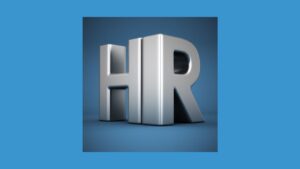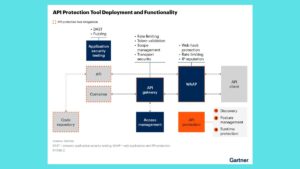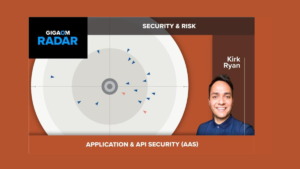The Evolution of HR Technology: Shaping the Future of Human Resources

HR technology is undergoing a significant transformation, driven by advancements in artificial intelligence (AI), automation, and data analytics. These innovations are reshaping traditional HR functions, from recruitment and employee engagement to performance management and learning. As organizations adapt to a rapidly changing workforce landscape, HR technology is playing a critical role in enhancing efficiency, improving employee experience, and driving strategic business outcomes. Here’s a look at the key trends in HR technology and how they are shaping the future of human resources.
1. Artificial Intelligence in HR: Automating and Enhancing HR Functions
AI is one of the most influential technologies driving HR transformation. Its ability to automate repetitive tasks and provide actionable insights is reshaping core HR functions.
- Automated Recruitment: AI-powered tools can screen resumes, rank candidates, and even conduct initial interviews through chatbots. By automating these processes, HR professionals can focus on more strategic tasks such as talent relationship management and employer branding.
- Predictive Analytics: AI helps HR teams predict employee turnover, identify training needs, and optimize workforce planning by analyzing historical data and current trends. Predictive analytics enable organizations to proactively address HR challenges.
- Employee Sentiment Analysis: AI can analyze employee feedback and sentiment data from surveys, emails, and social media, helping organizations understand employee morale and engagement in real-time.
2. HR Automation: Streamlining Processes and Reducing Administrative Burden
Automation in HR is not just about replacing manual tasks but enhancing efficiency and accuracy across various functions.
- Payroll and Benefits Administration: Automation ensures that payroll is processed accurately and on time, and that benefits are administered without errors. It can also handle compliance tasks such as tax filings and benefits eligibility checks, reducing the risk of non-compliance.
- Employee Onboarding: Automated onboarding platforms guide new hires through the paperwork and orientation process, making the experience smoother and more engaging. Automated workflows ensure that all necessary steps are completed before the employee’s first day.
- Performance Management: Automation streamlines performance reviews by allowing for continuous feedback and goal tracking. Automated reminders prompt managers and employees to check in on goals, providing a more dynamic approach to performance management.
3. Data-Driven HR: Leveraging People Analytics for Better Decision-Making
The use of people analytics in HR is revolutionizing how companies make data-driven decisions about their workforce. By collecting and analyzing HR data, organizations can gain insights into various aspects of employee management.
- Employee Turnover Analysis: By examining factors such as engagement levels, compensation, and career development opportunities, HR teams can predict which employees are at risk of leaving and take proactive measures to improve retention.
- Workforce Planning: People analytics can help organizations forecast future staffing needs based on trends in business growth, project timelines, and skill requirements. This ensures that companies have the right talent in place to meet their objectives.
- Diversity and Inclusion Tracking: Data can be used to track diversity metrics, measure the effectiveness of inclusion programs, and identify areas where the organization can improve its D&I efforts.
4. Cloud-Based HR Systems: Enhancing Accessibility and Scalability
Cloud technology has become a cornerstone of modern HR solutions, offering organizations greater flexibility, accessibility, and scalability.
- Unified HR Platforms: Cloud-based HR systems integrate various functions—such as payroll, recruitment, and performance management—into a single platform, providing a seamless user experience for both HR teams and employees.
- Remote Workforce Management: As remote and hybrid work becomes more prevalent, cloud-based HR solutions make it easier to manage a distributed workforce. Employees can access HR services, such as leave requests and training resources, from anywhere.
- Scalable Solutions for Growing Companies: Cloud-based HR platforms can easily scale as the company expands, allowing organizations to add new features or services as needed without significant infrastructure changes.
5. Employee Experience Platforms: Focusing on Engagement and Well-Being
Improving employee experience is a top priority for HR leaders, and technology plays a crucial role in shaping a positive workplace environment.
- Wellness and Engagement Apps: Digital platforms that focus on employee well-being offer features such as mindfulness exercises, stress management resources, and physical activity tracking. These tools help create a culture of wellness.
- Continuous Feedback Mechanisms: Employee experience platforms often include feedback tools that allow employees to share their thoughts and concerns regularly. This ongoing communication enables HR to address issues in real time.
- Personalized Learning and Development: Employee experience platforms are increasingly incorporating AI-driven personalized learning paths, enabling employees to access training programs that match their career goals and skill development needs.
6. HR Technology for Compliance: Managing Regulations and Reducing Risk
HR technology can help organizations navigate the complex world of regulatory compliance by automating processes and ensuring that records are accurate and up-to-date.
- Automated Compliance Checks: HR systems can perform compliance checks related to labor laws, health and safety regulations, and employee benefits. This reduces the likelihood of violations and associated penalties.
- Document Management: Cloud-based document management systems make it easier to store, retrieve, and audit employee records, ensuring compliance with data privacy regulations such as the GDPR or CCPA.
- Training and Certification Tracking: HR technology can track employees’ completion of mandatory training and certifications, providing evidence of compliance with industry standards.
7. Integrating HR Technology with Other Business Functions
The future of HR technology lies in its ability to integrate seamlessly with other business functions such as finance, operations, and IT. This integration allows for a more holistic approach to managing the workforce.
- Linking HR Data with Financial Metrics: Connecting HR systems with financial software enables organizations to understand the financial impact of HR initiatives, such as the return on investment for training programs or the cost of employee turnover.
- Cross-Department Collaboration: HR technology facilitates collaboration between HR, IT, and other departments by providing shared access to relevant data. For example, coordinating with IT can help manage the onboarding of new employees by ensuring that equipment and software are ready.
- Employee Self-Service Portals: Integrated self-service portals enable employees to access information across multiple business functions, such as HR, finance, and procurement, all in one place.
Conclusion
HR technology is rapidly evolving, offering organizations innovative tools to manage their workforce more effectively. As AI, automation, cloud computing, and data analytics continue to reshape the HR landscape, companies that embrace these technologies will be better positioned to attract top talent, enhance employee experience, and drive business growth.
The future of HR lies in using technology to create a more agile, data-driven, and employee-centric approach to managing people, where HR functions are not only streamlined but also aligned with strategic business goals. By staying ahead of these trends, HR leaders can ensure that their organizations are prepared to navigate the ever-changing world of work.






